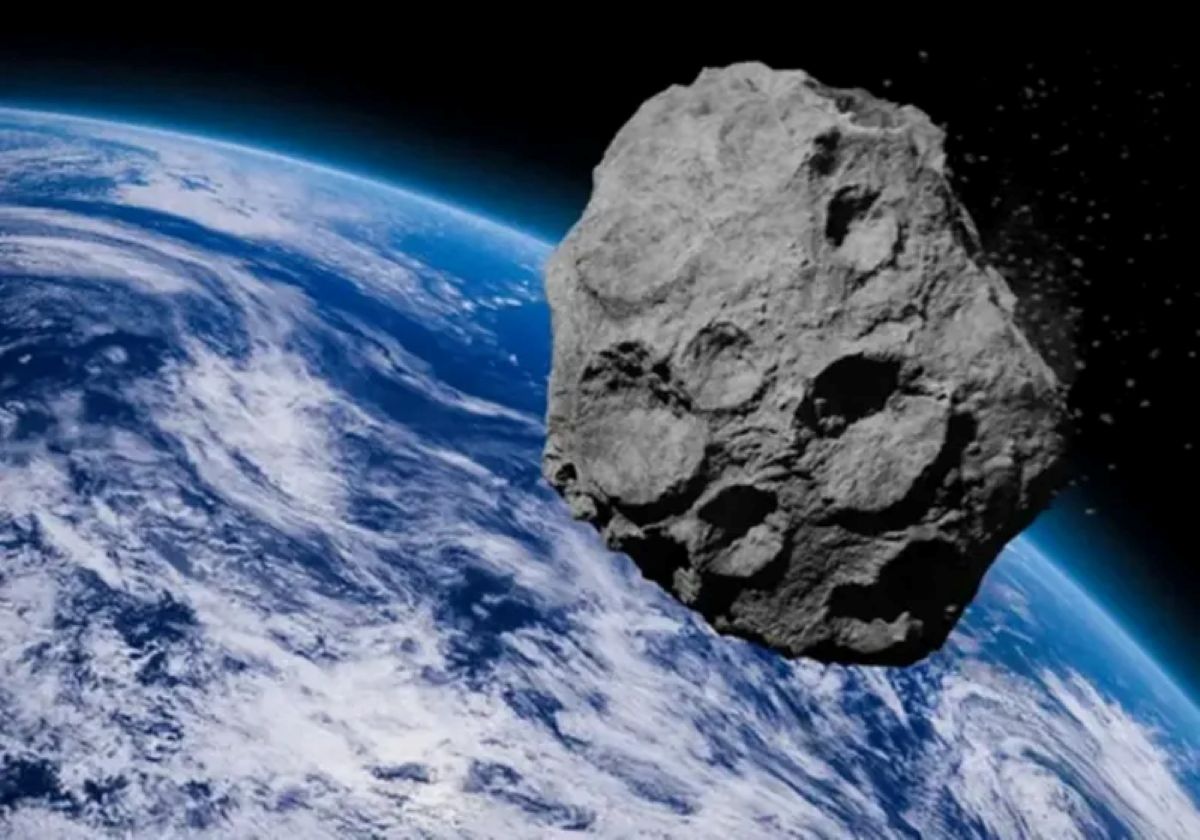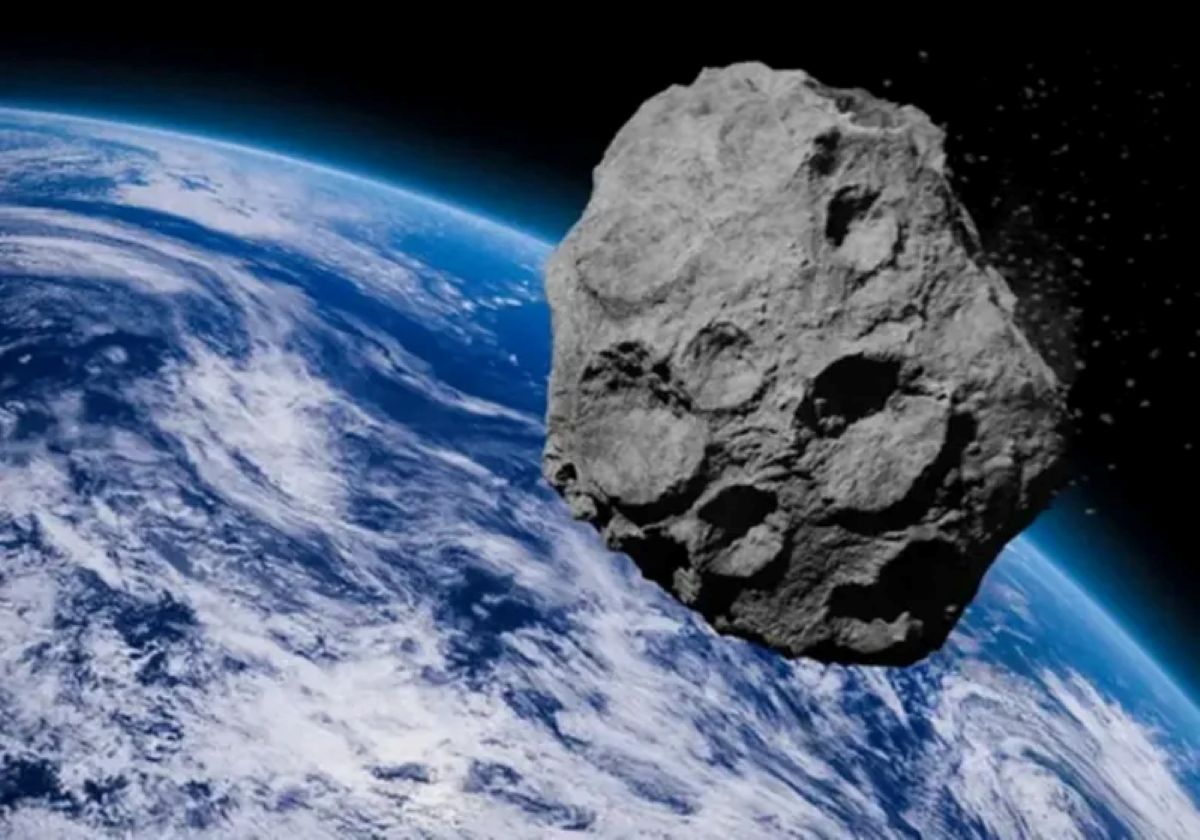NASA’s discovery of asteroid 2025 PN7, a small quasi-moon orbiting in sync with Earth, has sparked fascination worldwide. Though not a true moon, it shares Earth’s solar path, staying close until 2083 before drifting away. This cosmic companion offers scientists new insights into orbital dynamics, asteroid behavior, and planetary defense. Learn how Earth’s “fake moon” showcases our planet’s intricate dance with the cosmos—and NASA’s ongoing quest to uncover near-Earth mysteries.

Introduction: Earth’s “Two Moons” Buzz Explained
The Viral “Two Moons” Sensation
In October 2025, the internet was abuzz with a jaw-dropping claim: Earth now has two moons. Social media platforms exploded with posts and memes celebrating this cosmic twist, sparking widespread curiosity about what NASA had supposedly discovered. While the headlines made for great clickbait, the reality behind them is equally enthralling—scientists had confirmed the presence of an asteroid named 2025 PN7, a small, mysterious space rock that behaves like a moon but technically isn’t one.
Meet 2025 PN7 — Earth’s Quasi-Moon
Astronomers from the Pan-STARRS Observatory in Hawaii spotted 2025 PN7 in August 2025. The object didn’t orbit Earth directly—it circled the Sun in almost the same path and speed as our planet. This fascinating orbital behavior earned it the title of quasi-moon. NASA later confirmed that this asteroid, only a few dozen meters wide, has been quietly accompanying Earth for decades, making it a long-time companion in our solar neighborhood.
NASA’s Confirmation and Global Fascination
NASA’s announcement that 2025 PN7 would continue shadowing Earth until around 2083 captivated both scientists and the public alike. At roughly 4 million kilometers away—about ten times farther than our actual Moon—the asteroid won’t replace our lunar companion in the sky. Yet, its existence reveals just how dynamic and unpredictable Earth’s cosmic environment can be. This rare quasi-moon phenomenon has opened exciting new discussions about hidden celestial neighbors and the secrets still waiting to be uncovered within our orbit.
Discovery of Asteroid 2025 PN7
How 2025 PN7 Was Found
The asteroid 2025 PN7 was discovered in August 2025 by astronomers using the Pan-STARRS Observatory located in Hawaii. This observatory specializes in scanning the skies for near-Earth objects (NEOs) that could potentially pose a hazard or reveal new insights about our solar system. During its observations, Pan-STARRS spotted this small and faint object traveling in a trajectory closely resembling Earth’s orbit around the Sun, prompting further investigation.
The Link to the Arjuna Asteroid Group
2025 PN7 is part of the Arjuna group of asteroids—named for their Earth-like orbits. These asteroids share a near-identical orbit with Earth but are not gravitationally bound to it like our Moon. Instead, they follow the Sun but appear to stay near our planet, making them intriguing targets for scientists studying orbital dynamics and Earth’s broader celestial environment.
Initial Reactions and Misconceptions
When NASA announced the discovery, many assumed Earth had acquired a new true moon. However, scientists quickly clarified that 2025 PN7 is not a natural satellite but a quasi-moon—a unique kind of asteroid whose orbit appears to accompany Earth due to its synchronized orbit around the Sun. This distinction helped quell misunderstandings while highlighting the asteroid’s special status as a temporary companion to our planet.
What Is a Quasi-Moon?
Understanding the Quasi-Moon Concept
A quasi-moon is a fascinating celestial object that appears to orbit a planet, but in reality, it doesn’t behave like a true moon. Unlike Earth’s natural satellite—the Moon—which is gravitationally bound and orbits Earth directly, a quasi-moon follows a more complex journey. It orbits the Sun, just like Earth does, but its path is synchronized closely with our planet’s orbit, which makes it look like it is accompanying Earth over extended periods.
The Orbital Dance: Lockstep with Earth
From our vantage point on Earth, a quasi-moon seems to travel in an elongated, looping path around us. However, this is a visual illusion caused by its synchronized orbit with the Sun. The asteroid moves ahead of Earth at times and trails behind at others, creating a pattern astronomers call quasi-satellite motion. This interplay, influenced by both Earth’s and the Sun’s gravity, keeps the quasi-moon near Earth but never truly captured as a traditional satellite.
Temporary Cosmic Companions
Quasi-moons are temporary by nature. They can remain close to Earth for decades or even centuries before their orbits shift due to gravitational forces, moving them into different resonant orbits or away entirely. The intriguing asteroid 2025 PN7 has likely been Earth’s quasi-moon for about 60 years and is expected to keep this unique position until around 2083, after which it may drift away or enter another type of co-orbiting path.
Orbital Path and Duration: How Long Will It Stay?
The Unique Orbit of 2025 PN7
Unlike a true moon that orbits Earth directly, asteroid 2025 PN7 follows a more complex orbital path. It shares Earth’s orbital period around the Sun, traveling in a synchronized pattern that makes it appear from our perspective to be orbiting Earth. However, it actually revolves around the Sun in an elongated oval-shaped path, sometimes closer to the Sun than Earth and at other times farther away. This causes the asteroid to speed up or slow down relative to Earth, creating the illusion of a lunar companion.
A Long-Term Cosmic Companion
Scientists estimate that 2025 PN7 has been traveling near Earth since the 1960s and will maintain this quasi-moon relationship until approximately 2083. During this time, it will remain at a distance of about four million kilometers—roughly ten times farther than our actual Moon—making it invisible to the naked eye. After 2083, gravitational perturbations are expected to alter its trajectory, possibly moving it away from Earth’s orbit or into a different resonant pattern.
Why It Appears to Orbit Earth
The asteroid’s synchronized orbit with Earth creates what astronomers call a 1:1 mean-motion resonance, meaning it completes one orbit around the Sun in nearly the same time as Earth. This resonance causes 2025 PN7 to appear as if it is looping around Earth occasionally, earning it the “quasi-moon” label. Over decades, this gravitational dance keeps the asteroid nearby, highlighting the dynamic relationships between Earth and celestial neighbors beyond the moon we see.
How Big Is 2025 PN7 and How Far Away Is It?
Size and Composition
Asteroid 2025 PN7 is relatively small, with estimates placing its diameter between 18 and 36 meters (approximately 62 to 118 feet). This makes it roughly the size of a modest commercial building or a large airplane. Despite being an asteroid, scientists currently believe it is a natural rocky object, not space debris, though much about its composition remains unknown due to its faintness and small size.
Distance from Earth
Unlike our Moon, which sits an average of 384,000 kilometers (238,855 miles) from Earth, 2025 PN7 maintains a much larger distance—generally about 4 million kilometers (about ten times the Moon’s distance). Its orbit sometimes brings it closer to Earth, at around 299,000 kilometers during its closest approach, but often it travels much farther away, up to millions of kilometers. Because of this great distance combined with its small size, 2025 PN7 is impossible to see with the naked eye and requires powerful telescopes for observation.
Is Earth’s “Second Moon” Dangerous?
No Threat to Earth
Despite headlines that might sound alarming, asteroid 2025 PN7 poses no danger to Earth. Scientists and NASA emphasize that this space rock is too small and distant to impact or threaten our planet. Its closest approaches are still millions of miles away, far beyond the Moon’s orbit, making any collision impossible given our current orbital knowledge.
NASA’s Orbital Stability Models
NASA’s models show that 2025 PN7 has been in a stable quasi-satellite orbit since the mid-1950s and will remain so until around 2083. Throughout this period, gravitational forces between the asteroid, Earth, the Sun, and other planets ensure that the rock stays safely in its path without veering dangerously close to Earth. It is essentially a harmless “shadow companion” on Earth’s journey around the Sun.
Figurative, Not Literal: The “Fake Moon”
The term “Earth’s fake moon” or “second moon” is largely figurative, used to describe 2025 PN7’s unusual synchronized orbit with Earth. Unlike our true Moon, 2025 PN7 is not gravitationally bound to Earth and cannot be seen by the naked eye. It is an asteroid following a parallel orbit, creating the illusion of companionship but lacking the stable, close orbit that defines a natural satellite.
This discovery reminds us that Earth’s neighborhood is dynamic and full of small cosmic travelers. Though 2025 PN7 may not affect life on our planet, studying it offers valuable insights into the evolution of near-Earth objects and helps refine our understanding of the solar system.
Why NASA Studies Quasi-Moons
Studying Near-Earth Object Dynamics and Orbital Resonance
Quasi-moons like 2025 PN7 serve as natural laboratories to study the complex gravitational interactions between Earth, the Sun, and nearby celestial objects. Their unique orbital resonance—where they share Earth’s orbit around the Sun but aren’t gravitationally bound to our planet—helps scientists better understand the stability and evolution of near-Earth objects. These insights help reconstruct the dynamic early environment of the solar system when many bodies followed such intricate orbital dances.
Potential for Future Space Exploration and Asteroid Mining
Because quasi-moons move at nearly the same speed as Earth and remain relatively close, they are ideal targets for future space missions. Their proximity means spacecraft could reach them with less fuel than other distant asteroids, making them attractive candidates for exploration or even asteroid mining research. Studying their composition could reveal materials from the primordial solar system and offer clues about Earth’s formation.
Enhancing Planetary Defense Strategies
Tracking and analyzing quasi-moons improve our ability to predict the paths of near-Earth asteroids and refine models of their orbital behavior. This is crucial for planetary defense initiatives aiming to protect Earth from potential asteroid impacts. By understanding quasi-moons’ characteristics and trajectories, NASA and other agencies can better anticipate and prepare for any future threats, even if these specific asteroids aren’t currently dangerous.
Quasi-Moons vs. Mini-Moons: Key Differences
Understanding the subtle differences between quasi-moons and mini-moons helps clarify the nature of near-Earth celestial companions.
| Feature | Quasi-Moon | Mini-Moon |
| Orbit | Orbits the Sun in resonance with Earth, appearing to accompany Earth in its orbit but not gravitationally bound to Earth | Temporarily captured by Earth’s gravity and orbits Earth directly for short durations before escaping |
| Duration Near Earth | Can stay in quasi-orbit for decades to centuries, like 2025 PN7 staying until ~2083 | Usually only weeks to months, temporary captures from Near-Earth Object population |
| Gravitational Bond | Not gravitationally bound to Earth; influenced by both Earth and Sun gravity | Gravitationally bound to Earth during temporary orbit phases |
| Typical Size | Usually small asteroids, like 20-30 meters for 2025 PN7 | Usually very small asteroids, often less than 10 meters |
| Visibility | Too distant and faint to be seen without telescopes due to their distance and size | Usually much closer and briefly visible to telescopes during capture |
| Examples | 2025 PN7, Kamoʻoalewa (2016 HO3), 2023 FW13 | 2020 CD3 (a mini-moon captured briefly in 2020) |
Quasi-moons, like 2025 PN7, are Earth’s temporary co-orbiters sharing our path around the Sun, creating a fascinating gravitational dance that keeps them nearby for years. Mini-moons, by contrast, are often fleeting visitors physically orbiting Earth for short periods before drifting away back into solar orbit.
This distinction is crucial for understanding Earth’s relationship with small space rocks and the diverse population of near-Earth objects.
According to NASA’s latest findings, asteroid 2025 PN7 is expected to remain in Earth’s orbit until around 2083, maintaining a synchronized path as a quasi-moon. For detailed insights, read the NASA Official Quasi-Moon Update published by The Brighter Side of News.
The Future of 2025 PN7: After 2083
Drifting Into a New Orbit
Scientists predict that asteroid 2025 PN7 will remain Earth’s quasi-moon until approximately 2083. Around that time, gravitational influences from the Sun, Earth, and other planets will cause its orbit to shift, and the asteroid will gradually drift away from Earth’s vicinity. This natural progression is a reminder of the dynamic and ever-changing nature of our solar system, where celestial objects continuously alter their paths over decades and centuries.
From Quasi-Satellite to Horseshoe Orbit
After departing its current quasi-satellite status, 2025 PN7 might transition into different types of co-orbital patterns, such as a horseshoe orbit. In a horseshoe orbit, the asteroid shares Earth’s orbital zone but moves in a larger loop around the planet’s path, resembling a horseshoe shape when viewed from a rotating frame of reference. This orbit still keeps the asteroid near Earth’s orbit, but it no longer appears to closely accompany Earth as it does now.
What Scientists Hope to Learn
Tracking 2025 PN7’s eventual departure provides a rare opportunity for astronomers to study the long-term stability and evolution of quasi-moon orbits. The asteroid acts as a natural laboratory for understanding how gravitational forces shape the trajectories of near-Earth objects. Insights gained may improve predictive models for other asteroids, assist future space missions targeting these objects, and enhance planetary defense strategies against potential asteroid impacts.
As NASA continues to study near-Earth phenomena like 2025 PN7 while pursuing new lunar missions under the Artemis program, it’s inspiring to reflect on humanity’s first steps beyond our planet. Revisit history and explore how it all began in our feature — Apollo 11 Legacy: Celebrating 55 Years of the Moon Landing.
Conclusion: Earth’s Eternal Dance with the Cosmos
A Glimpse into Cosmic Harmony
The discovery of 2025 PN7 serves as a poetic reminder of Earth’s ever-changing relationship with the cosmos. This small, unassuming asteroid highlights how intricately our planet interacts with its celestial neighbors through invisible threads of gravity and motion. Each quasi-moon like 2025 PN7 moves in delicate synchrony with Earth, demonstrating that even minor asteroids can become part of a grand gravitational ballet shaping our solar system’s rhythm.
A Testament to Scientific Curiosity
As 2025 PN7 continues its silent orbit alongside Earth until 2083, it embodies the spirit of exploration that continues to drive NASA and astronomers worldwide. Studying these temporary companions deepens our understanding of near-Earth dynamics, planetary evolution, and the mechanisms that keep our solar environment stable. Future missions targeting quasi-moons may one day unveil the hidden composition and history of these asteroids, offering new clues about Earth’s formation and the forces that govern its space neighborhood.
The Beauty of Transience
Though 2025 PN7 will eventually drift away, its fleeting companionship reminds us that cosmic relationships are rarely permanent. Like graceful travelers sharing the same orbit for a time, these quasi-moons come and go, contributing to the ongoing story of Earth’s celestial journey. In every discovery—from the first moon to the smallest quasi-moon—human curiosity finds yet another reason to look upward, seeking answers in the silent rhythm of the universe.


Leave a Reply